Email funnels: From the first click to conversion… and beyond
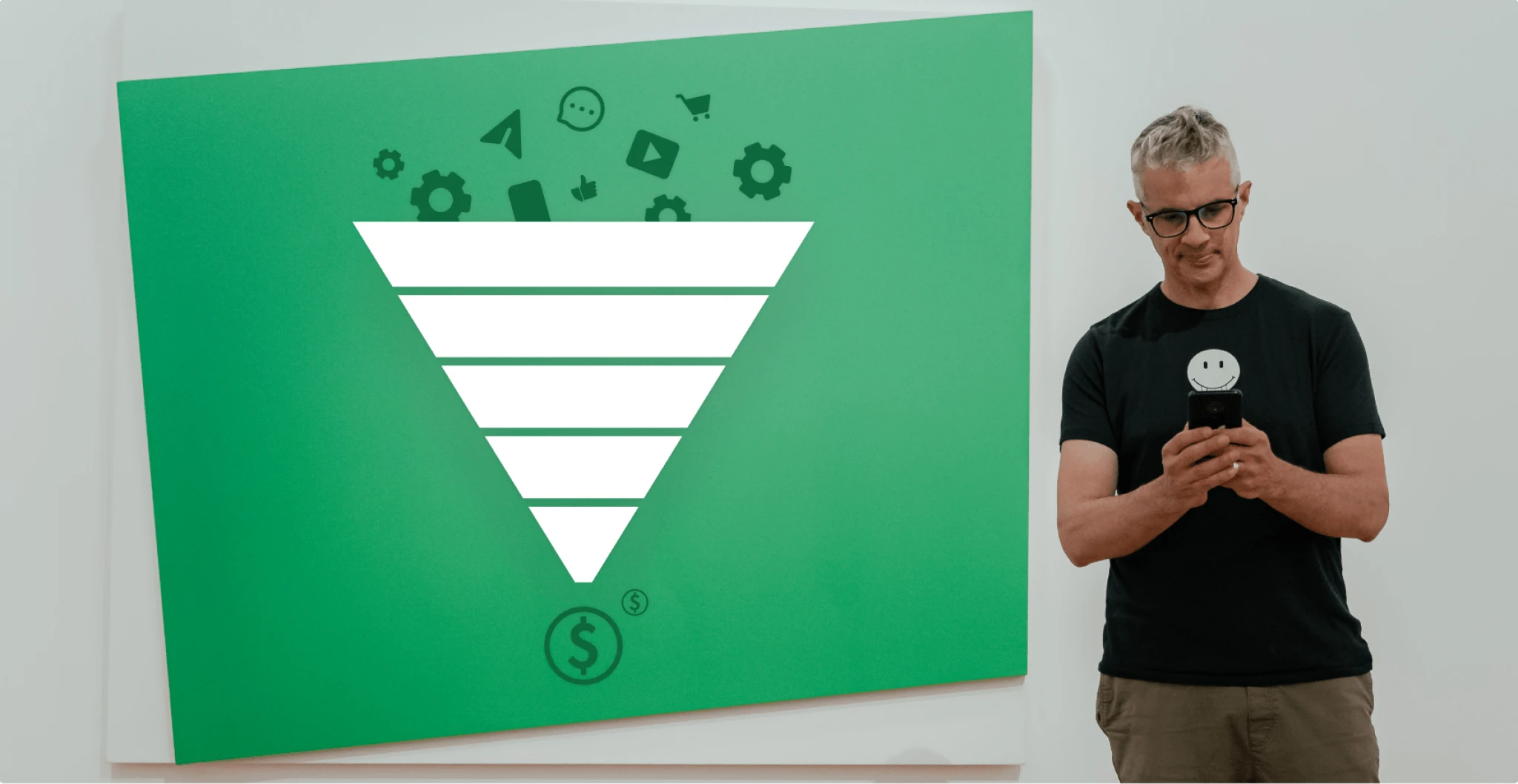
How would you feel if I came up to you and shouted, “BUY MY STUFF”? You don’t know me at all! Your first instinct is probably to run the other way.
It’s much more natural (and effective!) to first make an introduction, get to know each other, form a relationship… and then let people decide whether they want to buy.
That’s exactly the idea behind email funnels. You can use a series of emails to build trust, rather than relying on the “BUY MY STUFF” sales pitch.
An email funnel serves as a roadmap to guide people through every step of the customer journey—from making introductions to building interest to finally pushing for a sale. Each stage is designed to create connections around your brand, and show your value so that your email subscribers get more and more excited about making a purchase.
When done right, email marketing funnels can strengthen your brand and ramp up your conversion rates. Let’s see how!
What is an email funnel?
An email funnel is a series of emails that guide someone through the steps of becoming a customer or taking a desired action.
For example, if you’re an author, a potential customer might:
Visit your landing page.
Sign up to receive your newsletter in return for a free e-book.
Get a welcome email, explaining who you are and what you do.
Receive emails promoting your upcoming novel.
Click the link in the email to buy your book.
Continue to receive emails and updates on your future projects.
Once someone has signed up for your email list, each newsletter in the funnel is a gentle nudge towards taking a desired action. But remember—it doesn’t stop after the person has clicked ‘Buy’. You can continue sending follow-up emails after the purchase to nurture the relationship, upsell other products and build a network of loyal customers.
Stages of an email funnel
You’ll notice that an email funnel can be portrayed in a few different ways. Here’s one of the most popular ways to look at it:
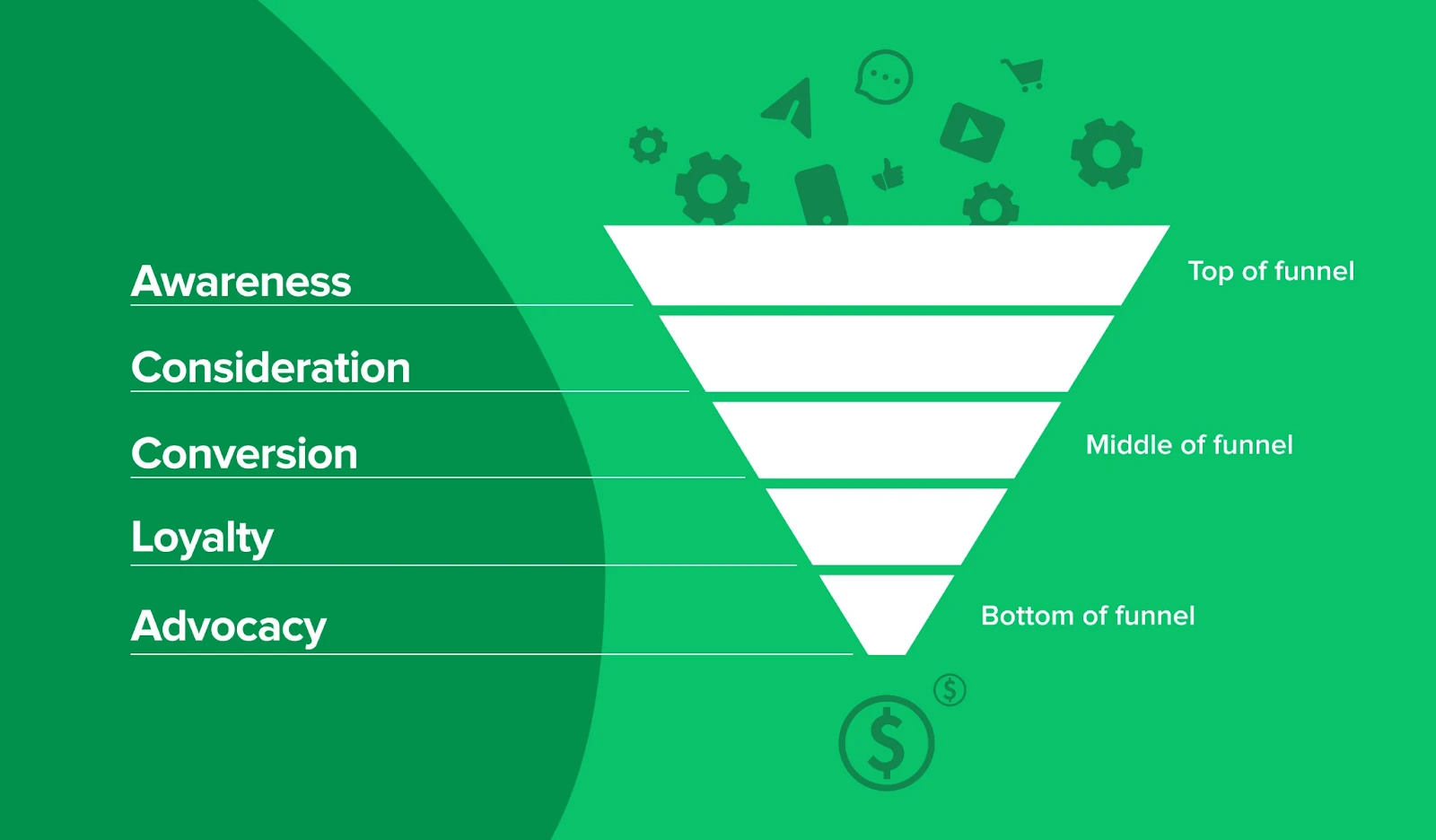
Each step channels potential customers further down the sales funnel, and closer to taking action. Let’s break this email sequence down a bit more!
This is the stage where people are just getting to know your brand.
Awareness: This is all about introductions! People sign up to hear from you, and you can say hi and present your brand (e.g. welcome email)
Consideration: Now is the time to go a little deeper and share your story, your values and what you’re selling (e.g. product newsletter)
At this point, people know who you are, and they’re (hopefully) excited enough to take action—and continue to work with you in the future.
Conversion: It’s crunch time, where you finally push for them to take the desired action—perhaps with an incentive (e.g. email coupon)
Loyalty: This is where you keep your customers coming back to take action. It’s easier to retain a current customer, rather than constantly trying to find new ones (e.g. VIP emails, special points system)
By now, people know your brand so well that they’re ready to spread the love and share it with their networks.
Advocacy: People feel so connected with your brand that they’re ready to leave reviews and share on social media (e.g. affiliate and partner programs)
Side note: In sales, people describe funnels as guiding a new lead from: ‘Cold 🥶 ’ (where they do not know your business or product), to ‘Warm 😊 ’ (where they start to get hyped about your brand), to ‘Hot 🔥 ’, (where they’re ready to take action and advocate for your product).
All roads lead to Rome, so however you want to look at it, you can apply these steps to your email marketing strategy and turn your subscribers into paying customers (or free triallers, or reviewers—or whatever action you’d like them to take)!
Why it’s good to define your email funnel
Your email funnel gives you control over the customer journey. Instead of wasting too much budget on advertising or social media, where it’s hard to pinpoint exactly which stage the audience is in, email allows you to send messages directly to each person based on where they are in your funnel.
With email funnels, you can create an organized, targeted strategy that’s based on your target audience. Tools like automation and segmentation will make your email content relevant to each of your subscribers, and they can be sent at just the right moment. Once it’s set up, an email funnel automation will work automatically, without you having to do anything—gathering new leads and earning you more conversions.
It’s also easier to retain your existing customers in the long run. After purchase, you still have that direct channel to ask them how they are enjoying the product and offer incentives as valued customers.
Now let’s buckle up and slide into the wonderful world of creating an email funnel!
How to build an email funnel
When someone opts in to hear from you, it’s like you’re going on a journey (imagine we’re in a tent with a crystal ball… just kidding). But really, you’re about to stop at a series of destinations, before you reach your end goal. And each stage has its own purpose and tools to help you get there!
Step #1—Awareness
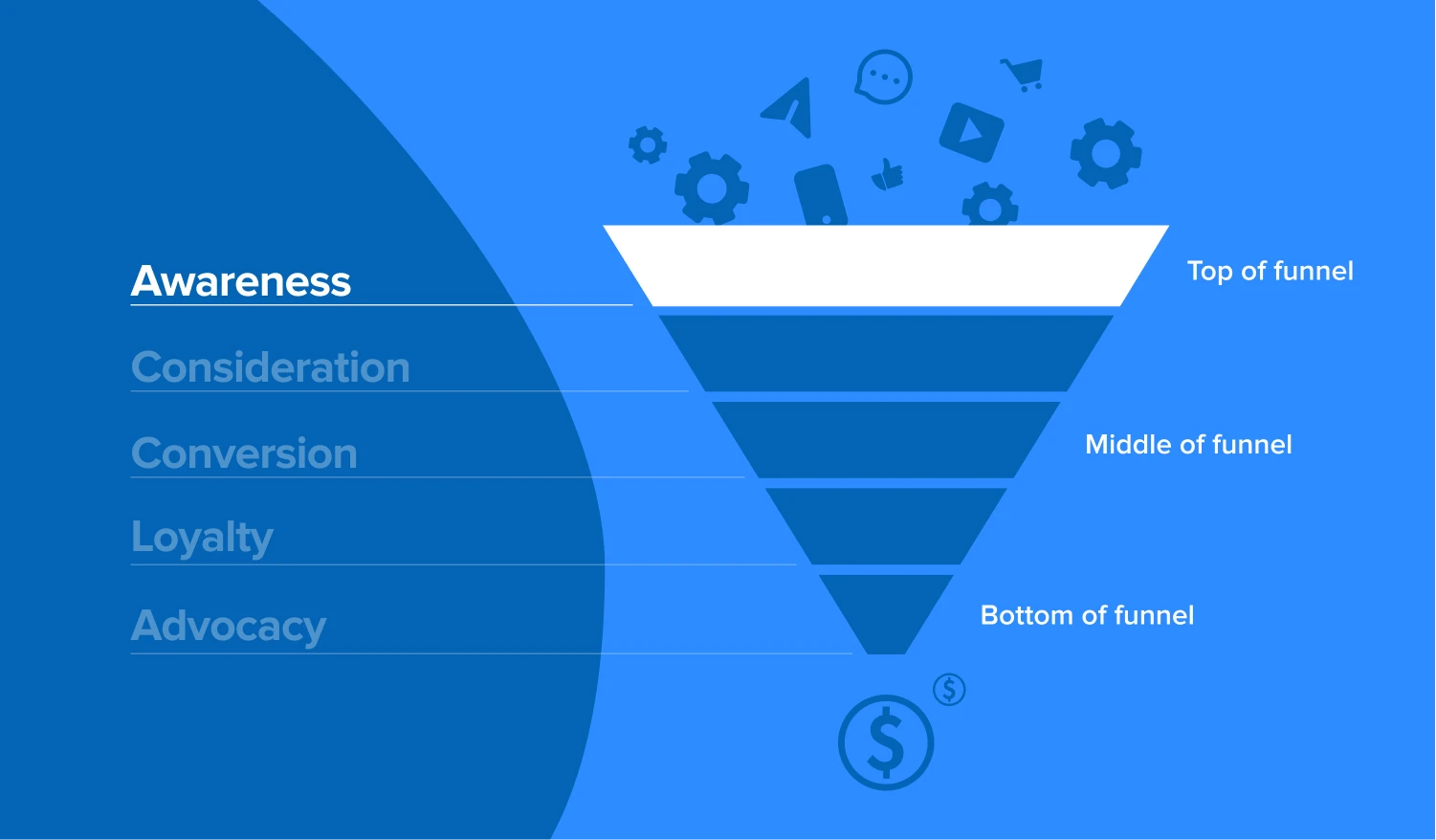
The awareness stage is all about getting new subscribers. In other words, you first want people to discover you and sign up to receive emails from you. This is where the magic starts!
There are several marketing tools you can use to get new subscribers, including:
Signup forms: These are embedded forms that you can add to your website. Just remember to activate double opt-in so that you can maintain a healthy email list (this applies to the other tools, as well)!
Pop-ups: As their name suggests, these forms will “pop up” while you’re visiting a site. When done right, these can be a great way to grab people’s attention—but don’t overdo it!
Landing pages: These are standalone web pages that have one specific goal (like getting new sign-ups). The key here is to offer something compelling and write persuasive copy so that people will take action.
Remember that people need a good reason to share their email address with you. One of the best tools of persuasion is a lead magnet. This is simply an incentive that you offer in exchange for someone’s email address. For example, you could offer downloadable PDF templates, free access to an online course, or a discount code.
Once people sign up, it’s time for onboarding! This is the first time they’ll hear from you, so make sure you reach out to them straight away with a welcome email (check out these welcome email examples for inspiration)!
The goal of your first email is to introduce yourself and help people to get familiar with you and your brand.
Capture new leads with signup forms, pop-ups and/or landing pages
Give people an incentive to sign up
Create a welcome email automation to make a good first impression
Step #2—Consideration
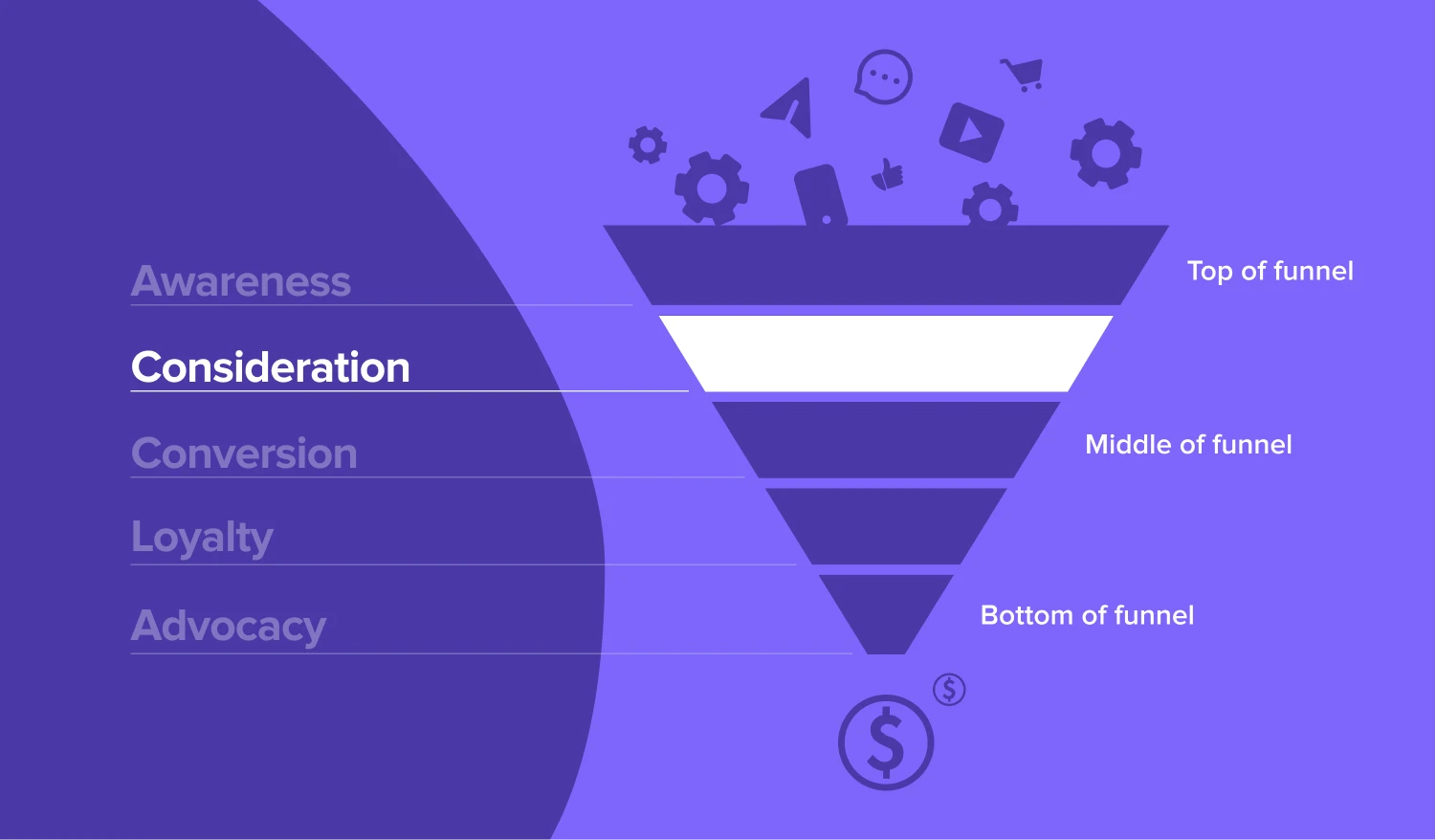
Now is the time to go deeper and let people discover more about you and your brand. For this part of the email funnel, you can get quite creative (check out these 100+ newsletter content ideas)!
Remember—you don’t have to be all about ‘selling’ straight away. It can be much more subtle than that. The key is to consistently share content that shows your value. Highlight your audience’s pain points and show how you can help, share FAQs, post educational content, present pricing comparisons, invite people to a webinar, include testimonials… The options are endless! Take a look at this guide on writing email marketing content to make sure your newsletters are compelling to read.
You’ll stay in the consideration stage for at least 3-4 emails (and possibly even more) while you build interest in your brand, so you also need to find an email cadence that works for you.
Our 2020 study found that the click-through rate was higher for email campaigns that were sent more frequently. This might be because regular contact helps you to stay top of mind. But just remember not to bombard people! Your email sequence depends on the needs of your target audience, and each email should be worth reading—no sending “just for the sake of it”!
Get creative with your email content—you don’t need to sell straight away
Share topics that are meaningful and show the value of your brand
Set up a sending frequency that reflects the needs of your audience
Step #3—Conversion
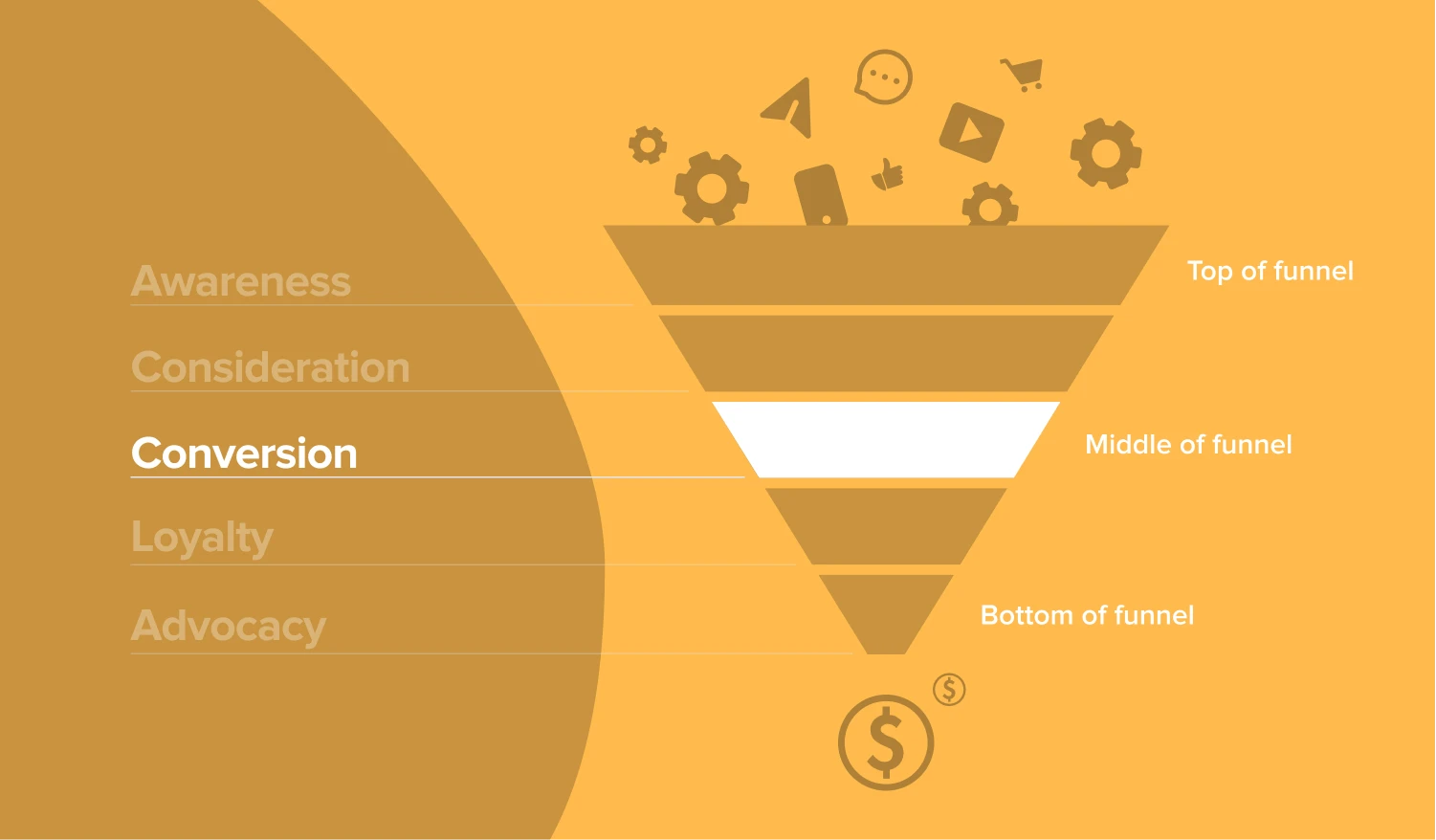
Yay, it’s go time! Your subscribers are primed and ready, and now we can encourage them to take action. Conversion could mean many different things: a sale, a free trial, a pricing comparison, or a customer review.
Whatever your conversion goal is, these quick tactics can get things moving:
Subject lines: You could have the most amazing email offer in the world, but you need to be sure that people will open it, first! Write a powerful email subject line to boost open rates.
Call to action (CTA): Make sure there’s at least one clear, visible, compelling CTA in your email. There’s nothing worse than getting excited about something, but not knowing where to click to access it!
Incentives: Just like with lead magnets to sign up, people also like incentives when they’re about to take action. Free delivery or a special discount will go a long way towards persuading people to convert.
Personalization: The proof is in the pudding—emails that use email personalization generate 6x higher transaction rates!
Urgency: Use time-sensitive language and/or countdown timers in your email to create a sense of urgency. This will help push people towards making a decision, fast.
Example: If you’re running an e-commerce business...
This stage could be broken down into several emails. For example, if people don’t click the first offer, you could follow up two days later with an even bigger discount.
Or if people go through to checkout, but then forget to complete the purchase, you could follow up with an abandoned cart email. For people who didn’t open your first email, you could auto resend your campaign to them (this can boost open rates by 30%).
Create a sense of urgency to get people to take action
Increase engagement with tools like auto resend, personalization and countdown timers
Include incentives to sweeten the deal
Step #4—Loyalty
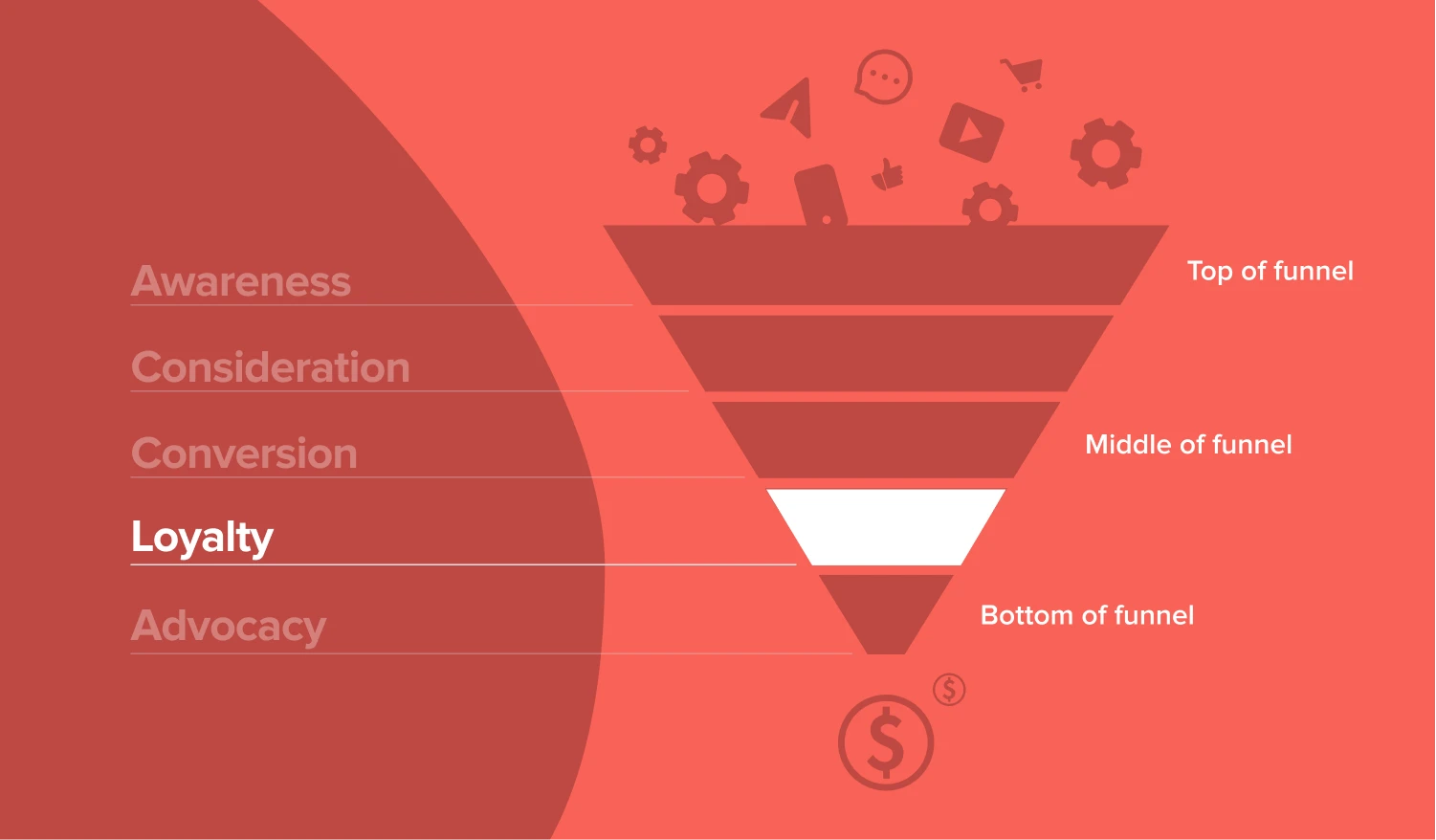
Great, your subscribers are now customers! But this isn’t the end of the story.
In our article on the upside down marketing funnel, we learned that customer retention is better and more sustainable in the long run. Why? Because it’s 7x more expensive to win a new customer than to retain an existing one!
The loyalty stage is all about keeping your current customers happy and coming back for more. Keep nurturing your connection with them. Regularly email them with new offers, upsells, product releases, and company news. And think about setting up reward points or membership schemes for loyal customers, so that they have an extra incentive to stick around.
Remember to:
Keep delivering what your customers need. Happy customers = happy business owners! If you aren’t sure how you’re doing, run regular email surveys to make sure you’re hitting the mark.
Offer special benefits to maintain the momentum. Perhaps you could create a Facebook community or a VIP discount.
Continue investing in your relationship with your current customers, always.
Invest your resources in customer retention
Keep nurturing the relationship with existing customers
Offer perks and privileges to loyal customers
Step #5—Advocacy
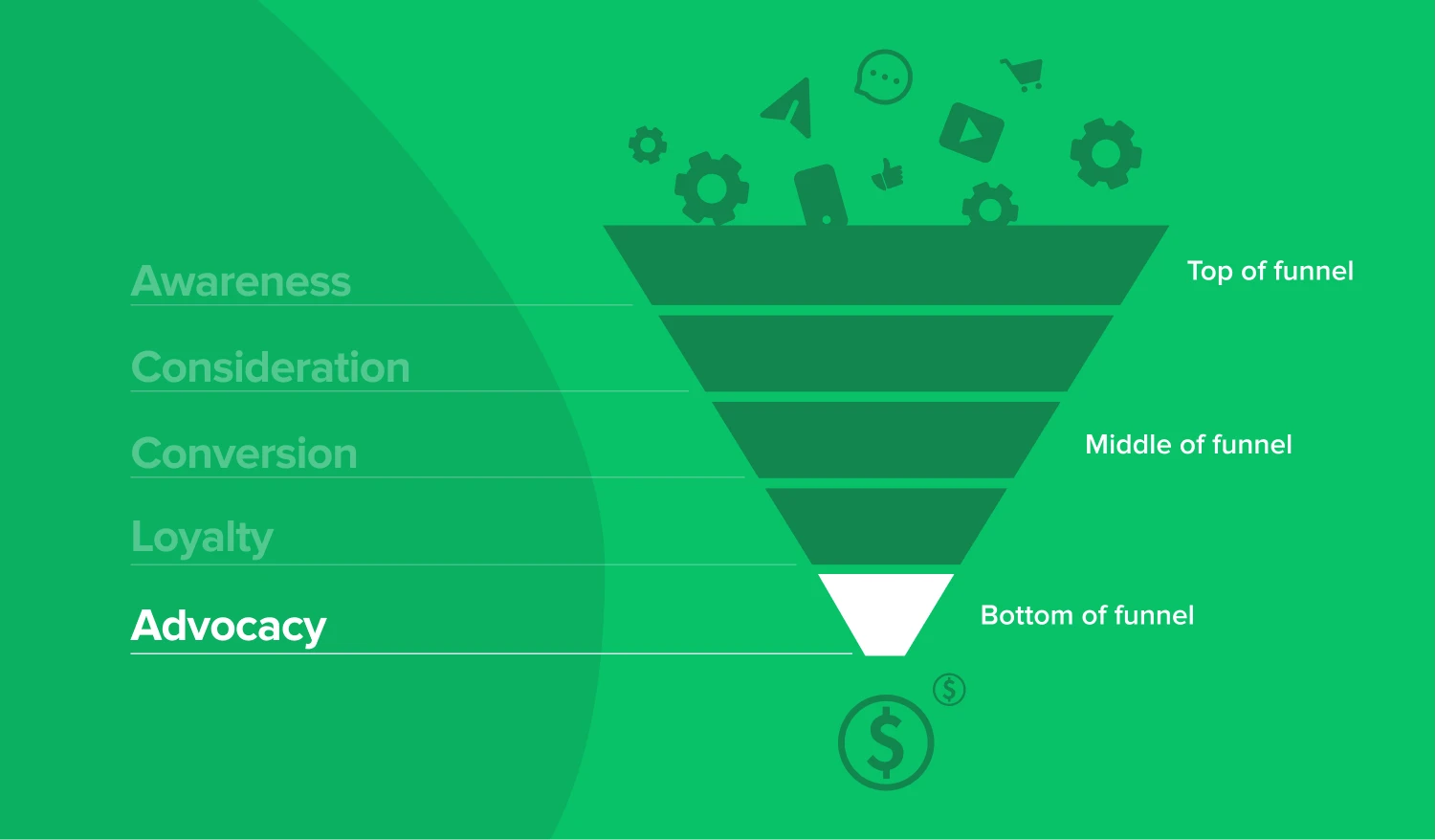
This is the stage where your email subscribers are ready to promote your brand to others. This is the moment when you can step back and finally let your audience do the talking for you!
Social proof is your best friend. In fact, 77% of consumers are more likely to buy something if it’s been recommended by their family and friends. So at this stage of your email funnel, you want to concentrate on encouraging people to spread the word.
Here are a couple of ways to promote advocacy in your emails:
Reviews: Send an email asking people to leave you a review on a popular site. These can increase conversions by 270%.
Testimonials: Ask people to write a testimonial or record a video interview that could be featured on your website.
Social media posts: Create a hashtag or a challenge where people can post about your brand on social media.
Affiliate and partner programs: Set up a rewards program for people who are regularly referring new customers.
Use reviews and testimonials to add social proof to your business
Create programs to reward those who promote you
A quick email funnel example
Let’s see how a real-life email funnel could play out, using the example of makeup brand IL MAKIAGE. This is a quick 3-email example, but your funnel will likely include several emails to get subscribers ready to become customers.
The awareness stage
People can complete a quiz to find out which foundation will match their skin tone. They can then enter their email address to access the results.
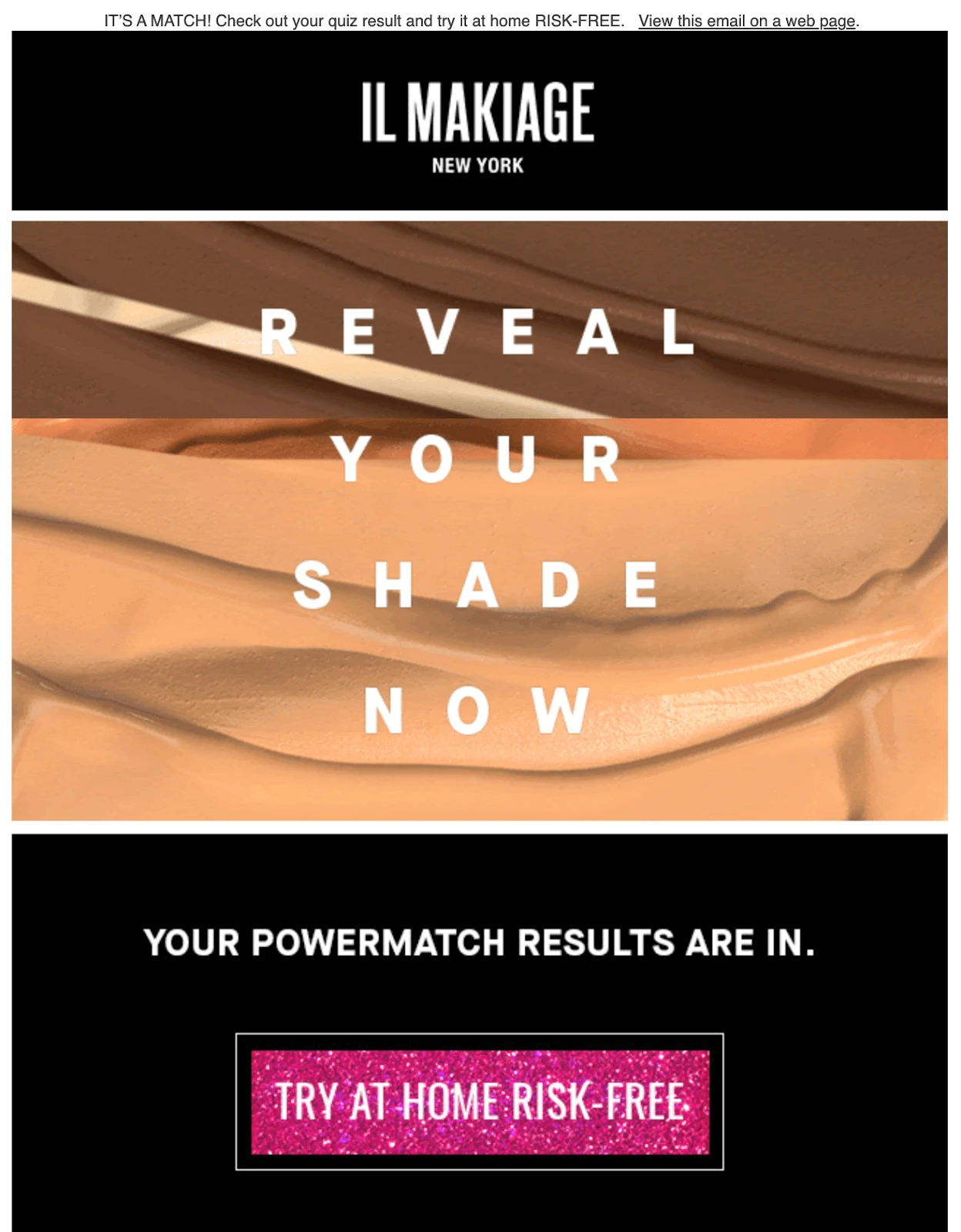
The consideration stage
People then receive a series of emails that encourage them to try their personalized foundation at home, along with testimonials from well-known brands like Forbes.
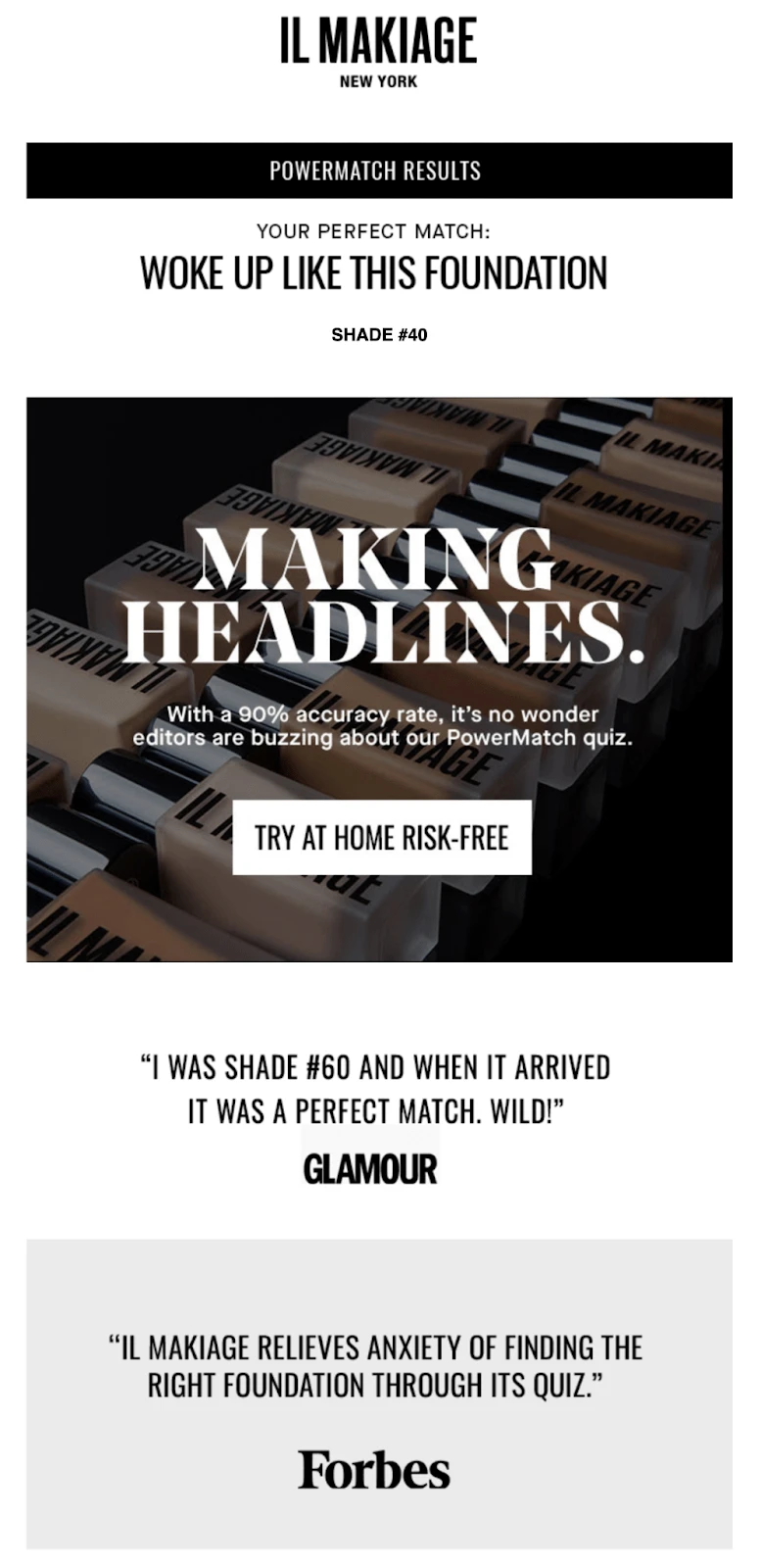
The conversion stage
To push for a sale, IL MAKIAGE addresses pain points directly (“commitment phobic?”) and then shares a discount code. This messaging is tailored for those who haven’t yet converted, along with an extra incentive to seal the deal.
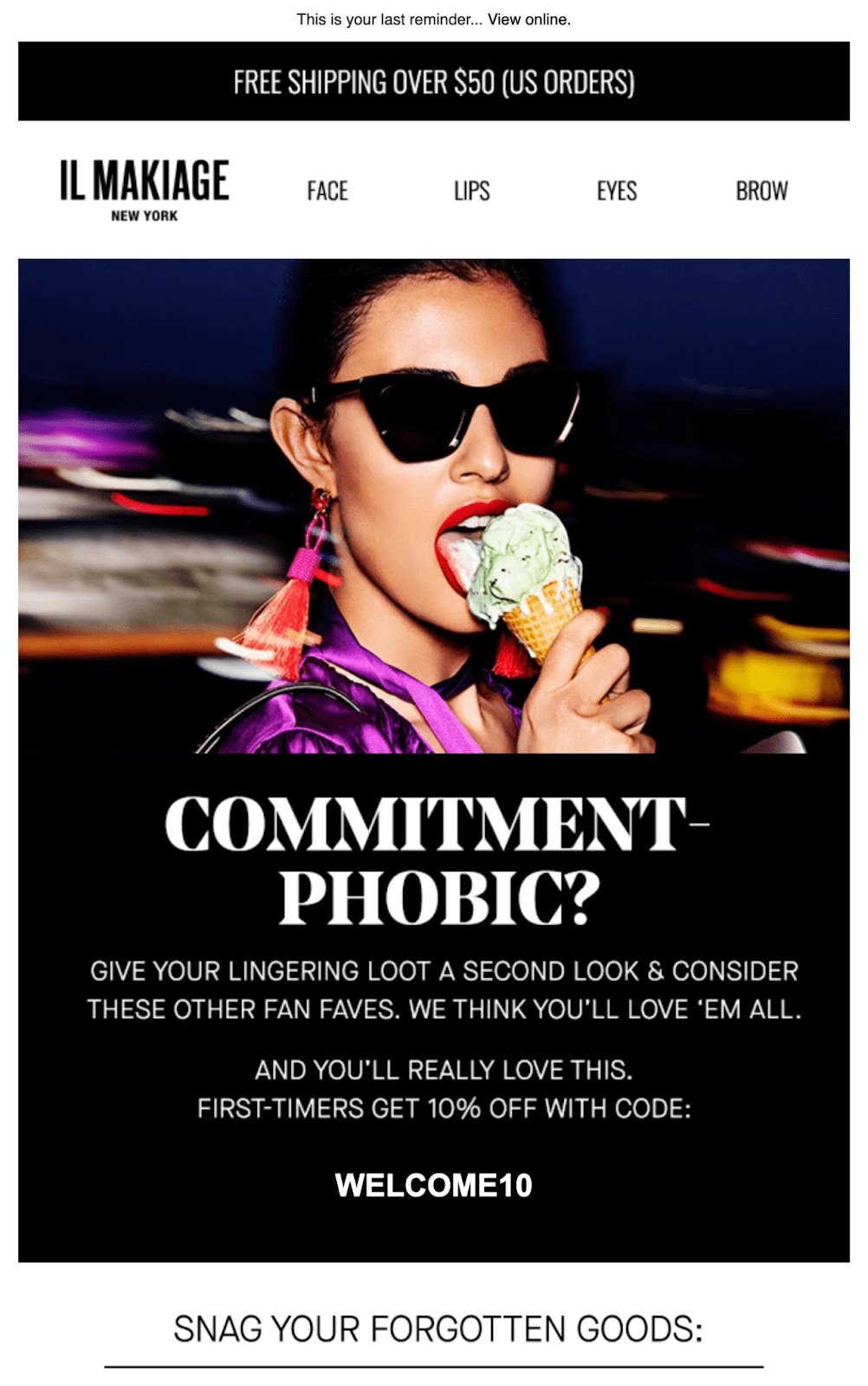
An email funnel template
Feeling ready to create your own email funnel? That’s fantastic! Here are some things to keep in mind:
Awareness: What would persuade your audience to sign up for your newsletter?
Consideration: What valuable content can you share to build and nurture the relationship? How can you gently introduce your product/service into this?
Conversion: It’s crunch time! What would persuade your audience to make the decision?
Loyalty/Advocacy: How can you keep them coming back for more, and encourage them to spread the word?
Let’s get your creative juices flowing with this fictional email funnel example.
Scott is a personal and professional coach, and he wants more people to sign up for his online course. To do this, he sets up an email sequence.
Awareness: Scott creates a landing page offering a free e-book download on how people can boost their careers in 30 days when they sign up to receive his newsletter.
Consideration: Scott shares weekly motivational tips and inspiration in his email marketing campaigns.
Conversion: Scott encourages people to take it to the next level by investing in his online course, offering the first module for free.
Loyalty/Advocacy: Scott consistently adds value with updated modules, e-books, and other digital products to help people to keep growing.
From cold to hot: Funnel your way to email success
Hopefully, these best practices and examples will inspire your email funnel strategy—and get you those conversions! Whatever the goal of your campaign, email funnels let you take back control of the customer journey and get you the results you need.
